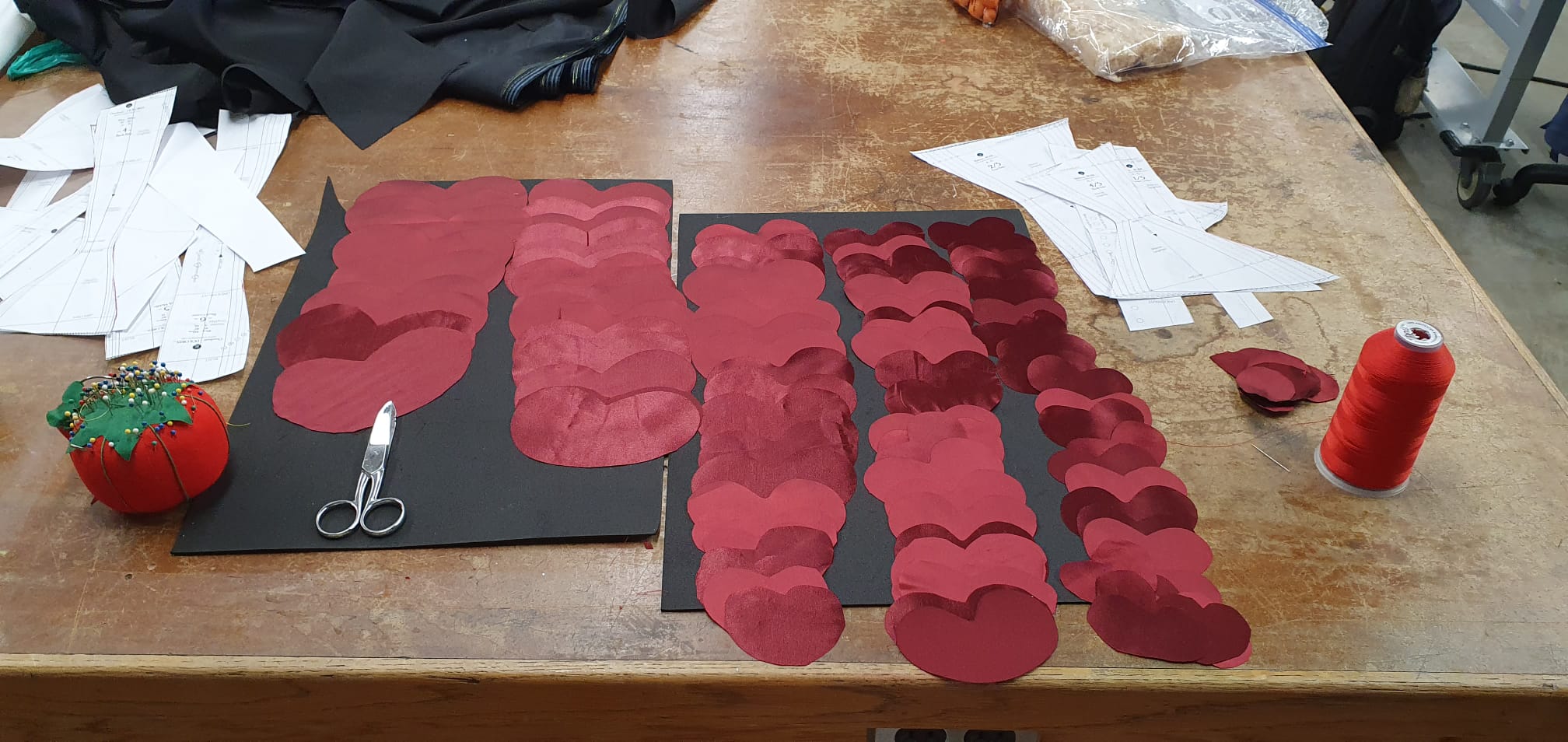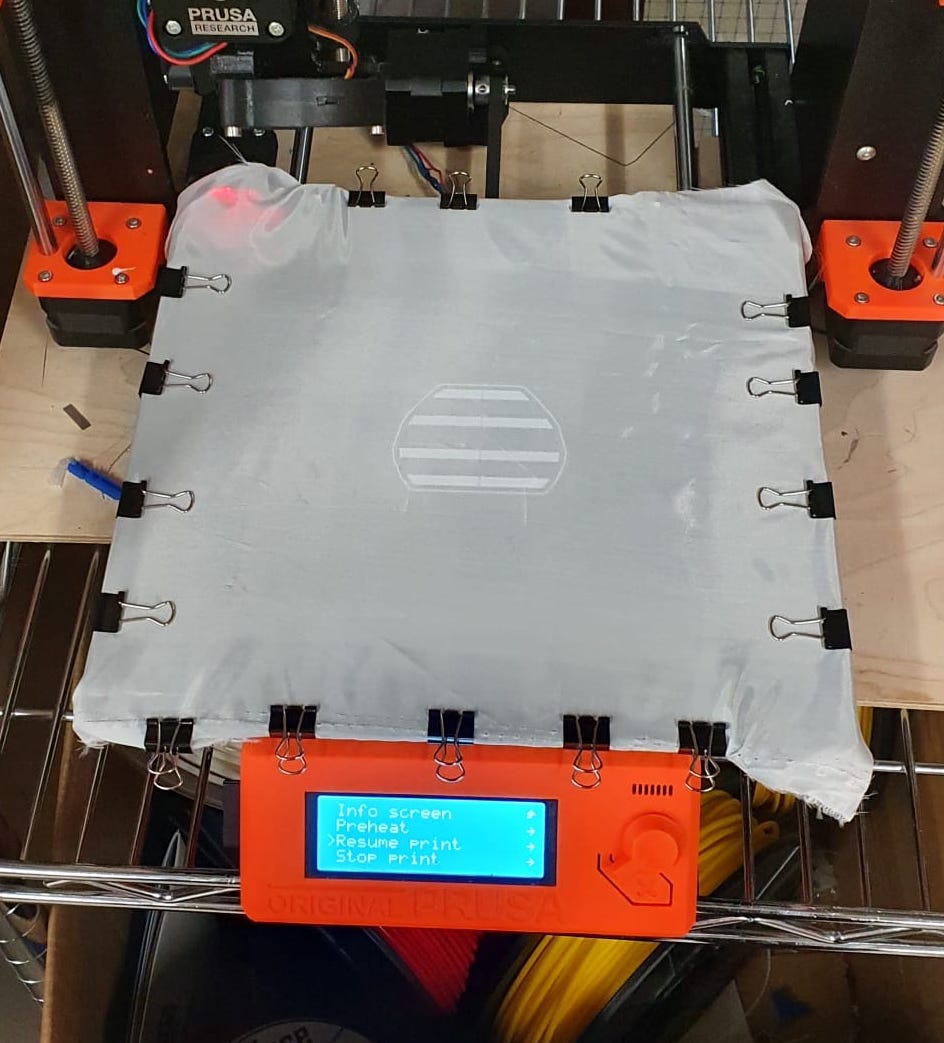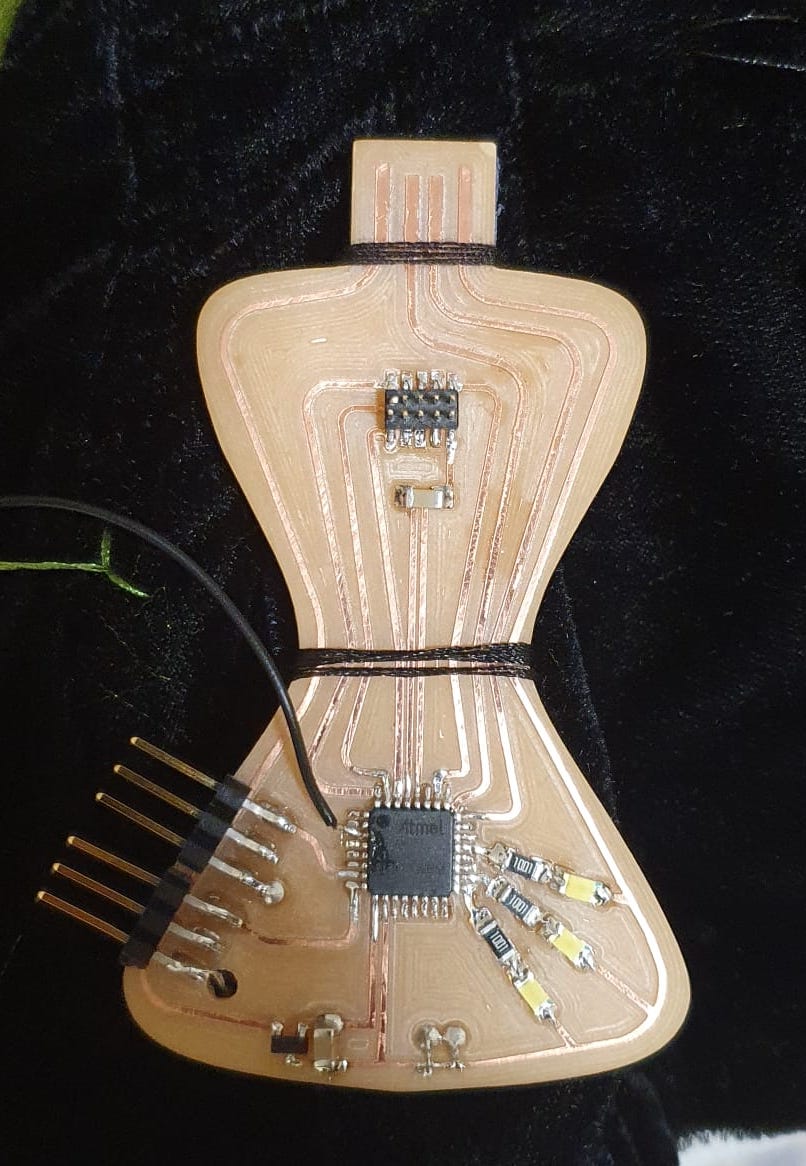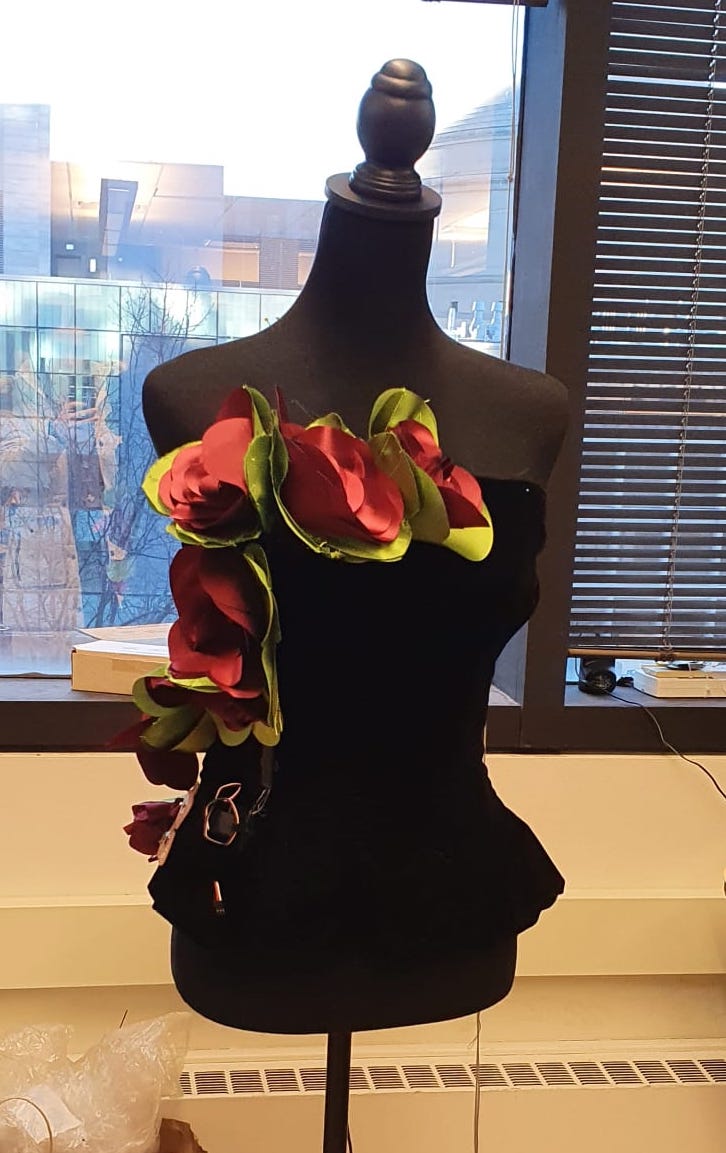
Embedding tech into fashion, maker and Harvard Graduate School of Education student Rehana Al-Soltane has produced a dress which features servo-controlled flowers that bloom, thanks to an Atmel microcontroller, a custom PCB and some awesome 3D printing. This is no mere "stick electronics to a dress" project. No, this is a true labor of love which encompasses many maker skills.






Rehana is an experienced multi-discipline maker who is adept with a soldering iron and a sewing needle. For their final project they created "The Blooming Dress", a dress which was hand stitched and embedded with an Atmel microcontroller, similar to those found in Arduino, along with a servo to control the opening and closing of rose blooms as the user presses a capacitive touch input on a custom PCB.
The process is involved and started with designing the shape of the leaf. The shape has to be perfect in order for the servo actuated movement to be precise. After some exploration, including using a Prusa MK3S+ 3D printer, one of the best 3D printers, to print directly on to fabric (the new Prusa MK4 claims to print on any surface, including cardboard), Rehana elected to sandwich a thin plastic sheet between the rose petals, giving the blooms flexibility and strength. The shape of the blooms is also important, and Rehana went through many shape iterations before finding the solution which was then laser cut.
The continuous servo motor pulls threads through flexible 3D printed channels. These channels flex to the shape of the bodice, while providing a path for the threads to follow. The bodice is made from black velvet, but a satin version was made during the testing phase. Assembly saw the channels sewn to the bodice and fishing wire connecting the servo to the blooms. The servo had its own pouch sewn to the side of the bodice.
Controlling the project is an Atmel microcontroller, as found in many Arduino boards. This is soldered into a custom, hand-made PCB which shares the silhouette of the dress. There is no USB port on the PCB, but we can see six GPIO pins which connect to the microcontroller, so we must assume that programming the chip involves a USB to serial interface (CP2102, CH340 etc) and the code appears to be Arduino based. The project could be easily replicated using a Raspberry Pi Pico, perhaps even a Raspberry Pi Pico W for remote control via a web interface.
With the physical build and software complete, Rehana tested the rose blooms on a mannequin before wearing it themselves.
This project is the culmination of solving electronics, sewing and engineering problems. The problems faced during the build saw many iterations and learning experiences for Rehana and from that their knowledge has grown.
The full project build is detailed by Rehana and is well worth reading.







